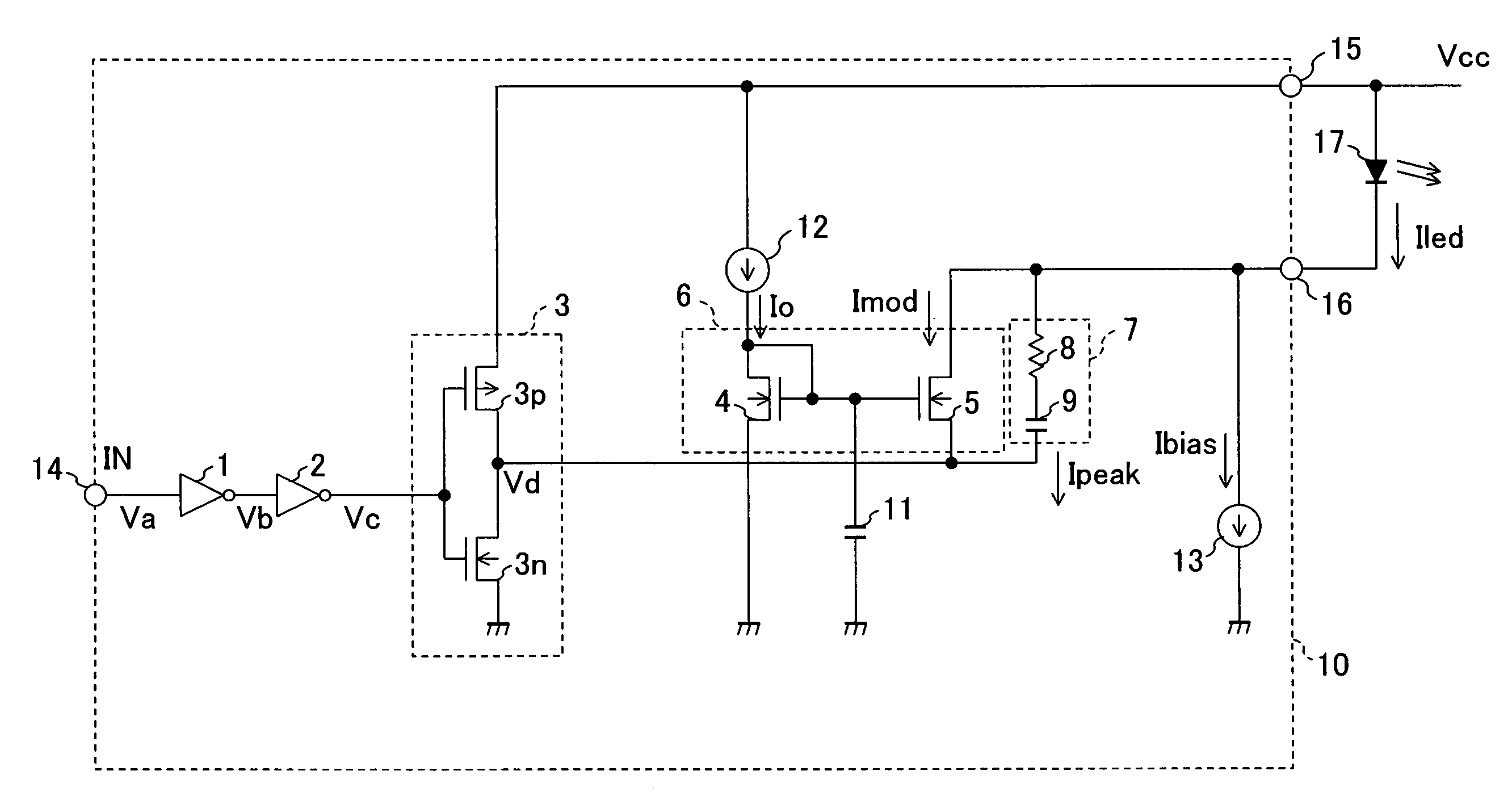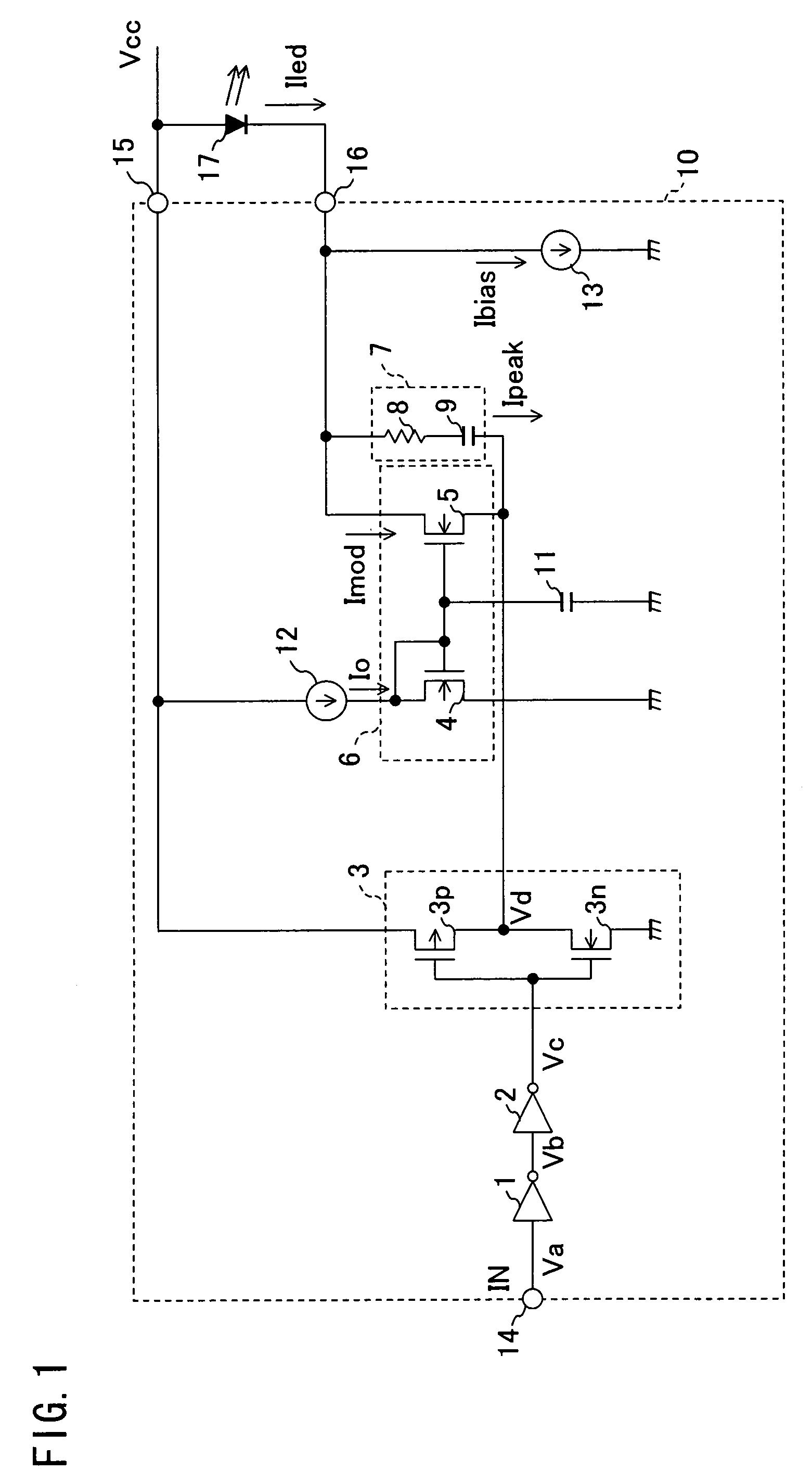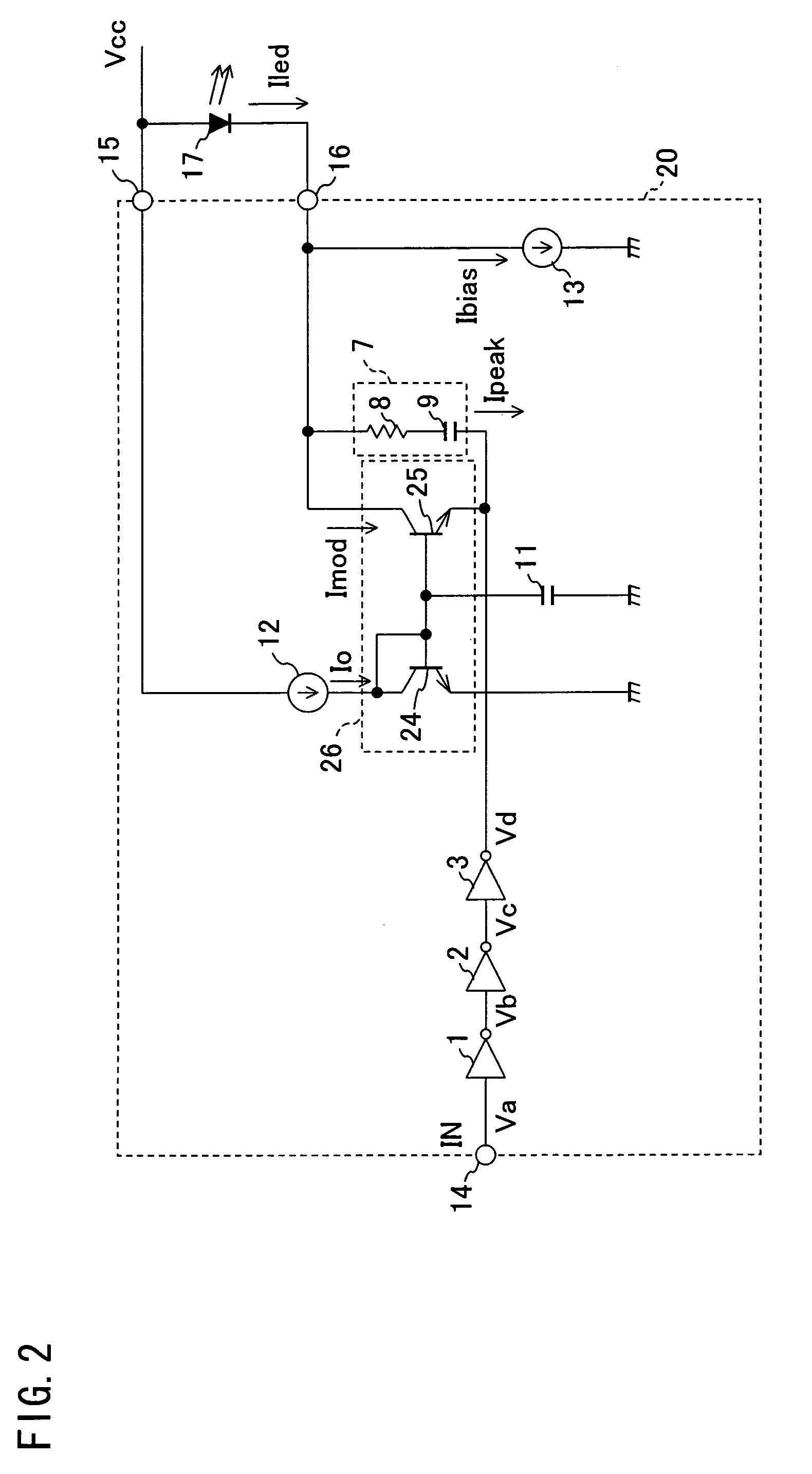Light emitting diode driving circuit and optical transmitter for use in optical fiber link
a driving circuit and light-emitting diode technology, applied in the field of optical transmitters, can solve the problems of low current consumption, distortion of pulse width, and difficulty in accelerating the response speed of led emitting light, and achieve the effect of easy realization of low current consumption
- Summary
- Abstract
- Description
- Claims
- Application Information
AI Technical Summary
Benefits of technology
Problems solved by technology
Method used
Image
Examples
embodiment 1
[0035]The following is a detailed description of an embodiment in accordance with the present invention with reference to the drawings. FIG. 1 shows an embodiment of the present invention, and is a block diagram showing a configuration of an optical transmitter for use in the optical fiber link.
[0036]The optical transmitter for use in the optical fiber link of the present invention is provided with an LED (light emitting diode) 17 and an LED driving circuit 10 for driving the LED 17. The LED driving circuit 10 is provided with an input terminal (IN) 14 to which an input electronic signal IN is inputted, a power source terminal (VCC) 15 connected with a constant voltage source (not shown) for outputting a power source voltage Vcc, and an LED connection terminal (LED OUT) 16 to which the LED 17 is connected. One end of the LED 17 is connected with the power source terminal 15, and the other end of the LED 17 is connected with the LED connection terminal 16.
[0037]The input electronic s...
embodiment 2
[0049]Another embodiment of the present invention is described below with reference to FIG. 2. Note that the same reference numerals and symbols are given to the members that have the same functions as those described in the foregoing embodiment 1, and descriptions of those members are omitted here as a matter of convenience.
[0050]As shown in FIG. 2, a configuration of an LED driving circuit 20 of the present embodiment is the same as the configuration of the LED driving circuit 10 of the foregoing embodiment 1, except in that the current mirror circuit 6 having the N-channel MOS transistor 4 and the N-channel MOS transistor 5 is replaced with a current mirror circuit 26 having a bipolar NPN transistor (QN) 24 serving as a first bipolar transistor, and a bipolar NPN transistor 25 serving as a second bipolar transistor.
[0051]In this case, a base and a collector of the bipolar NPN transistor 24 are connected with a base of the bipolar NPN transistor 25. Further, an emitter of the bipo...
embodiment 3
[0053]Still another embodiment of the present invention is described below with reference to FIG. 4. Note that the same reference numerals and symbols are given to the members that have the same functions as those described in the foregoing embodiment 1, and descriptions of those members are omitted here as a matter of convenience.
[0054]In the LED driving circuit 10 of the foregoing embodiment 1, a current Imod flows into the output terminal of the inverter 3, when an output voltage Vd from the inverter 3 is low level. More specifically, when the output voltage Vd from the inverter 3 is low level, the N-channel MOS transistor 3n in the inverter 3 is turned on, and therefore the Imod flows between the drain and source of the N-channel MOS transistor 3n. The output voltage does not become GND level (0) completely, due to an on-resistance of the N-channel MOS transistor 3n. When Ron(3n) is the on-resistance of the N-channel MOS transistor 3n, the output voltage from the inverter 3 (a v...
PUM
 Login to View More
Login to View More Abstract
Description
Claims
Application Information
 Login to View More
Login to View More - R&D
- Intellectual Property
- Life Sciences
- Materials
- Tech Scout
- Unparalleled Data Quality
- Higher Quality Content
- 60% Fewer Hallucinations
Browse by: Latest US Patents, China's latest patents, Technical Efficacy Thesaurus, Application Domain, Technology Topic, Popular Technical Reports.
© 2025 PatSnap. All rights reserved.Legal|Privacy policy|Modern Slavery Act Transparency Statement|Sitemap|About US| Contact US: help@patsnap.com



